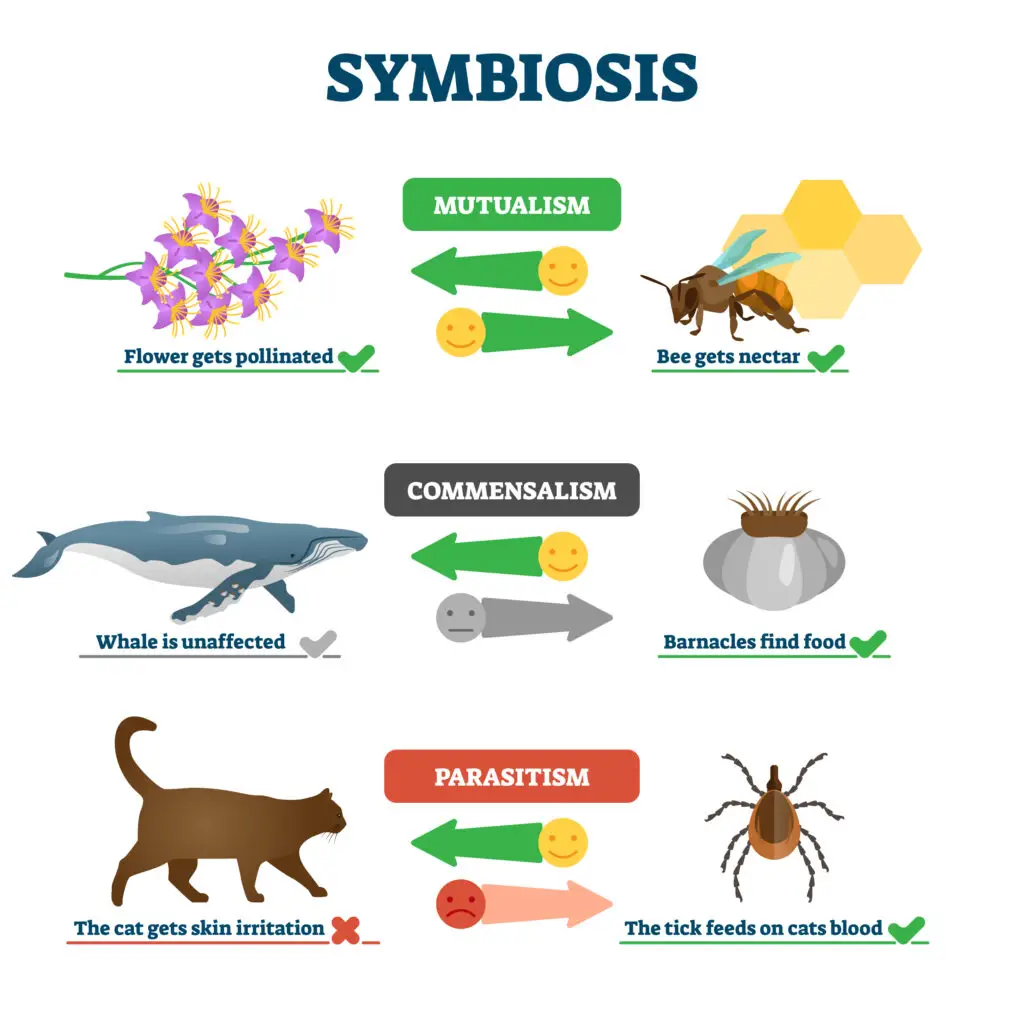Symbiosis
Definition of Symbiosis
Symbiosis is a close, long-term interaction between two different species that live in close proximity. In symbiosis, the relationship can be mutually beneficial, commensal, or harmful, depending on how the species interact.
Symbiotic Relationships
Symbiotic relationships are close interactions between two different species that live near each other and affect each other in some way. There are three main types:
- Mutualism: In mutualism, both species benefit. For example, bees and flowers have a mutualistic relationship: bees get food from flowers, and flowers get pollinated by bees.
- Commensalism: In commensalism, one species benefits, and the other is neither helped nor harmed. For example, barnacles attach to whales to catch food in the water, but the whale doesn’t get anything in return, and it isn’t harmed.
- Parasitism: In parasitism, one species benefits (the parasite), while the other is harmed (the host). An example is fleas on a dog. The fleas get food by drinking the dog’s blood, but the dog can suffer from itching or infection.
So, in symbiotic relationships, the way species interact can be positive for both, neutral for one, or harmful for one.
Symbiosis in Humans
Symbiosis is a special relationship where two different organisms live closely together and help each other. Humans have several examples of symbiosis, especially with bacteria and other tiny organisms.
One example is the bacteria in our intestines. These bacteria help us digest food, breaking down things we can’t digest on our own. In return, they get a safe place to live and plenty of nutrients. This relationship is a win-win, as both humans and the bacteria benefit.
Another example is mites that live on our skin. These tiny organisms live in our hair follicles and feed on dead skin cells and oils. They help keep our skin healthy by removing waste, and in return, they get food and a safe place to live.
A third example is mitochondria in our cells. Long ago, scientists think mitochondria were separate organisms, but they formed a symbiotic relationship with human cells. Now, mitochondria live inside our cells and produce energy for us. In return, they have a safe environment where they can thrive.
These symbiotic relationships show how humans and other organisms help each other survive and stay healthy.
